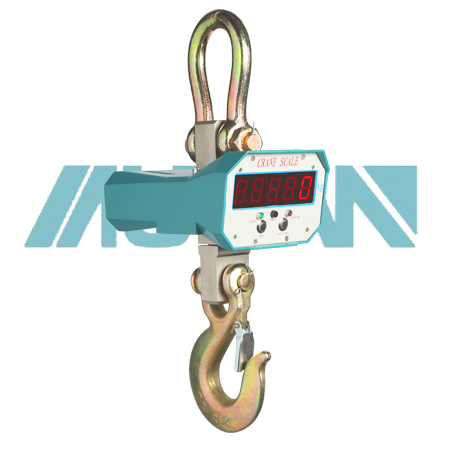 中文版
中文版



Welcome to contact us by phone:0086-0312-7969888
A digital crane scale, also known as an electronic crane scale, is a device designed for accurately measuring the weight of suspended loads. The structure of a digital crane scale may vary slightly among different models and manufacturers, but it generally includes the following key components:
Load Cell:
The load cell is the primary sensing element responsible for converting the force applied to the scale into an electrical signal. It measures the tension force exerted by the suspended load.
Housing or Enclosure:
The load cell and electronic components are housed within a protective enclosure. The housing is designed to shield the internal components from environmental factors such as dust, moisture, and physical damage.
Shackles or Hooks:
Digital crane scales are equipped with shackles or hooks that allow for the attachment of the scale to the lifting apparatus, such as a crane or hoist. The load is suspended from these attachment points.
Display Unit:
The digital crane scale features a display unit that provides real-time weight readings. The display may include a digital screen or an LED display, showing the weight in the desired units (e.g., kilograms or pounds).
Control Buttons or Keypad:
Some digital crane scales have control buttons or a keypad that allows the user to perform functions such as taring, zeroing, switching units, and setting parameters. These controls contribute to the scale's versatility and ease of use.
Battery Compartment:
Digital crane scales are often powered by rechargeable batteries. The battery compartment is designed to hold the power source, ensuring that the scale remains operational during lifting and weighing operations.
Wireless Communication (Optional):
Some advanced digital crane scales may feature wireless communication capabilities. This allows the scale to transmit weight data to remote displays or recording devices, enhancing convenience and data management.
On/Off Switch:
An on/off switch is typically provided to control the power supply to the digital crane scale. This switch helps conserve battery life when the scale is not in use.
Overload Protection:
Digital crane scales often incorporate overload protection mechanisms to prevent damage in case the load exceeds the scale's rated capacity. This is a crucial safety feature.
Calibration Mechanism:
Digital crane scales may have a calibration mechanism to ensure accuracy. Calibration allows the user to adjust the scale for variations caused by environmental conditions or wear.
Hanging Assembly:
The hanging assembly includes the structural components that connect the load cell to the shackle or hook. It is designed to handle the forces exerted during lifting operations.
Indicator Lights (Optional):
Some models may include indicator lights to provide visual cues for different conditions, such as power status, stability, or successful weighing.
It's important to note that the specific features and design of digital crane scales can vary, and users should refer to the manufacturer's documentation for detailed information on the structure and operation of a particular model. Regular calibration and maintenance are essential to ensure the accuracy and reliability of digital crane scales.

X